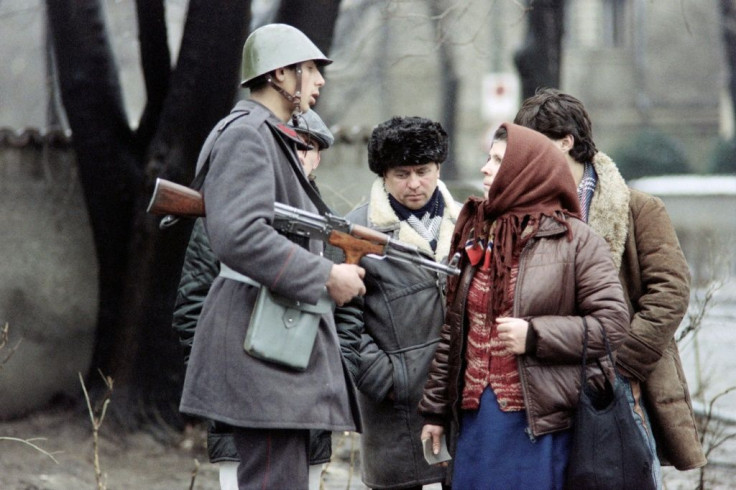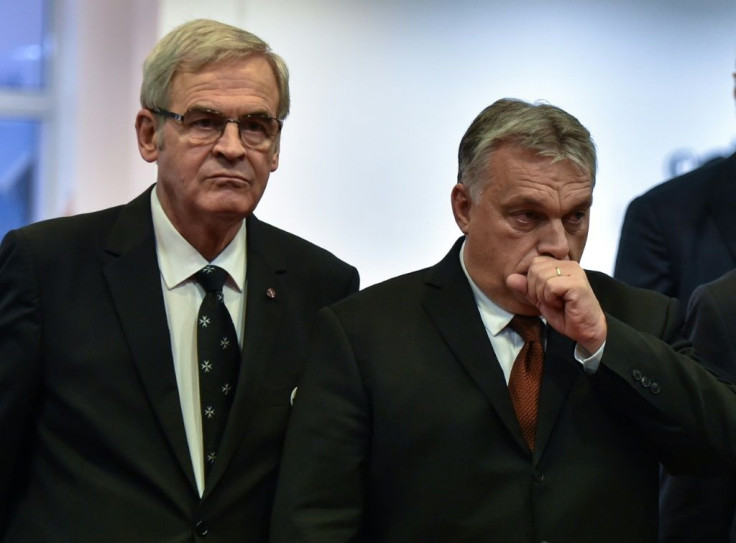Romania's 1989 Revolution In Five Testimonies

In December 1989, Romania was shaken by 10 days of protests that led to the fall of Europe's last communist dictatorship.
The protests started in Timisoara in the west of the country and spread to Bucharest, causing leader Nicolae Ceausescu to flee on December 22.
Ceausescu was executed on December 25 with his wife Elena. More than 1,000 people died in the crackdown on protesters before and after Ceausescu's death.
Five witnesses share their memories with AFP.
Laszlo Tokes, a Reformed Church pastor, is often described as the one who sparked the revolution when his threatened expulsion for criticising the Ceausescu regime first brought people into the streets.
"I couldn't imagine that on December 15, people would respond to my call... and that they would come to my church to express their solidarity.
"Our life was on the line. We were in a desperate situation. There was no alternative other than Ceausescu's fall, but that seemed unlikely. December 22 was a miracle."
Today the 67-year-old ex-parliamentarian from the Hungarian minority is still pastor in Oradea in the north-east.
Son of a communist activist, Petre Roman was a university professor in Bucharest when the protests began. He went on to become Romania's first prime minister after the revolution.
"For me, the most dramatic moment of the revolution involved the barricade erected on University Square. Without the barricade made of chairs, tables and other things we found in the street, the outcome (of the regime falling) wouldn't have been so fast.
"The barricade allowed us to resist until almost midnight, when they (Ceausescu's forces) started to shoot in our direction from all over the square. From 81 people, 39 were slaughtered."
"On 22 December I was one of the first to enter the central committee of the Communist Party after Ceausescu fled."
The National Salvation Front (NSF) named Roman, now 73, prime minister on December 26, a post he held until October 1991.

Radu Filipescu, an anti-communist dissident, protested in downtown Bucharest on December 21.
"The next morning, when I returned to work, a man came down from the car that used to follow me every day to 'invite' me to the headquarters of the Securitate (the secret police). There were already two other men held for distributing leaflets.
"A few hours later, a guard opened the door and told us: 'You are free'. Back on the streets I learned that Ceausescu had fled in a helicopter."
The engineer, 63, set up his own company and secured a patent for devising a special kind of clip.
Writer and poet Ana Blandiana -- who had several of her works banned by the communist regime -- said downtown Bucharest looked "like a battlefield" late December 21.
"The next day I was out on the streets again, feeling hopeful in that atmosphere. Then someone started talking to the crowd with a loudspeaker, saying how we have been set free and from now on we'll be led by people of our own choosing. He presented a list on which I heard my name, which struck me as a bit strange and dented my enthusiasm."
"A few days later, Ion Iliescu (who took power after Ceausescu fled) announced, without consulting me, that I would be vice-president of the NSF. I refused despite their insistence. That's when I understood everything," that Iliescu wanted opponents of communism in the new leadership to gain legitimacy.
Blandiana, 77, has transformed a prison in Sighet in the north into a memorial to victims of communism, the only such memorial.
Dan Voinea, a military prosecutor, asked for Ceausescu to receive the death penalty following what critics described as a mock trial.
"On December 22, I was sent to the central committee of the Communist Party which was under assault by protesters. I learned that Ceausescu had just been arrested in Targoviste (100 kilometres (60 miles) north of Bucharest) and I was told to go there to prepare the trial.
"I thought that some hearings would follow, that witnesses would testify, but it was explained to me that time was running out. I wrote the indictment and accused Ceausescu of 'crimes against humanity' -- punishable by death under the penal code -- because he gave the order to shoot protesters."
Ceausescu and his wife Elena were condemned and summarily executed on Christmas Day 1989.
"My feeling? I was relieved that we got rid of the dictator. I don't regret it. I'm sure that no other punishment would have been fair for a dictator like Ceausescu."
Now 69, Voinea has retired after 20 more years on the job after 1989.
© Copyright AFP 2024. All rights reserved.





















